- Tay-Sachs Disease: “Cherry-red” macula, NO hepatosplenomegaly, hyperreflexia.
- Niemann-Pick Disease: “Cherry-red” macula, WITH hepatosplenomegaly, foam cells.
- Gaucher Disease: Hepatosplenomegaly, pancytopenia, bone crises, “wrinkled tissue paper” macrophages.
- Fabry Disease: Peripheral neuropathy (burning pain), angiokeratomas, hypohidrosis, X-linked.
- Krabbe Disease: Peripheral neuropathy, optic atrophy, developmental delay, globoid cells.
- Metachromatic Leukodystrophy: Central & peripheral demyelination, ataxia, dementia.
- Hurler Syndrome (MPS I): Corneal clouding, gargoylism, developmental delay.
- Hunter Syndrome (MPS II): NO corneal clouding, aggressive behavior, X-linked.
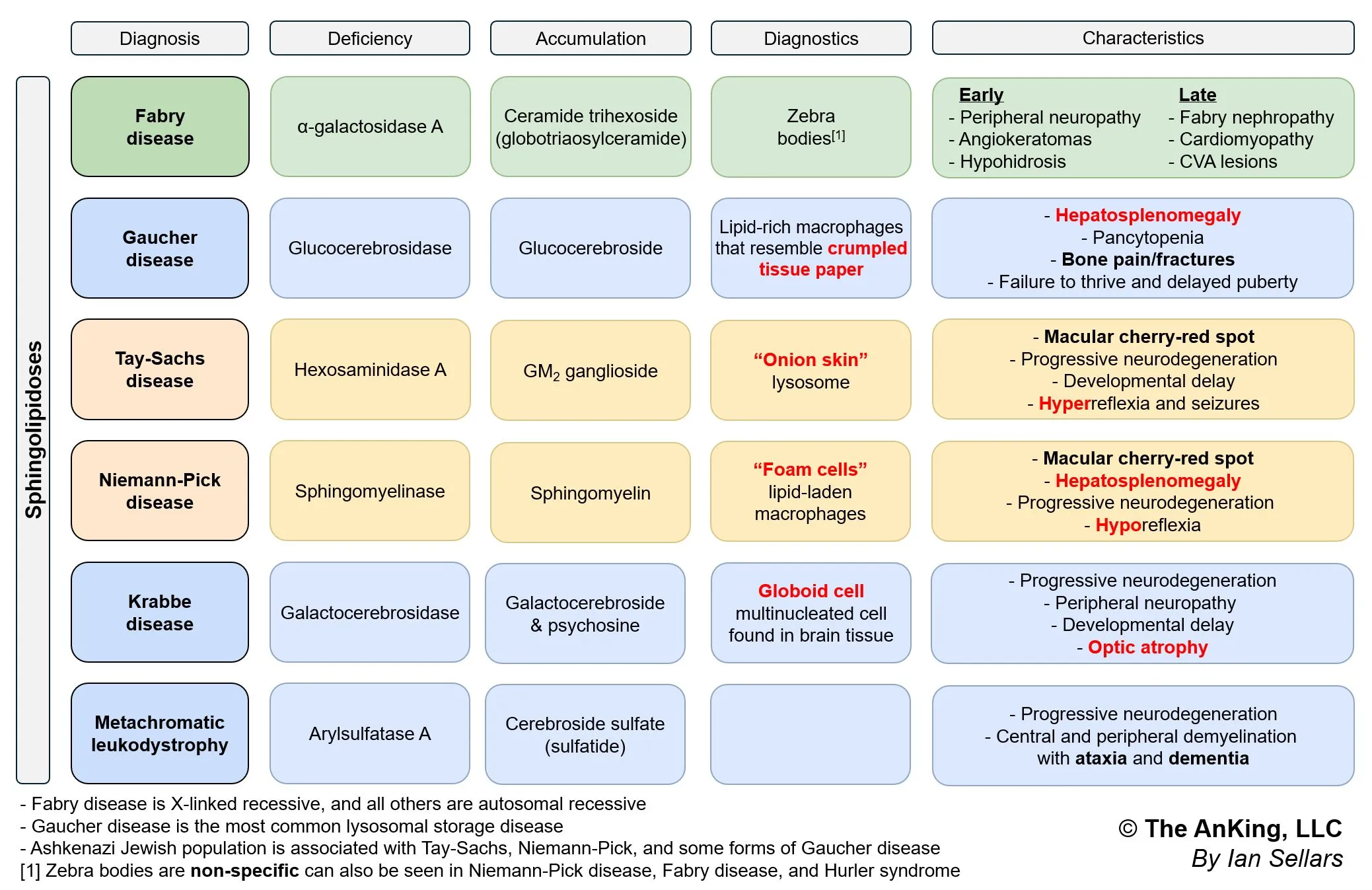
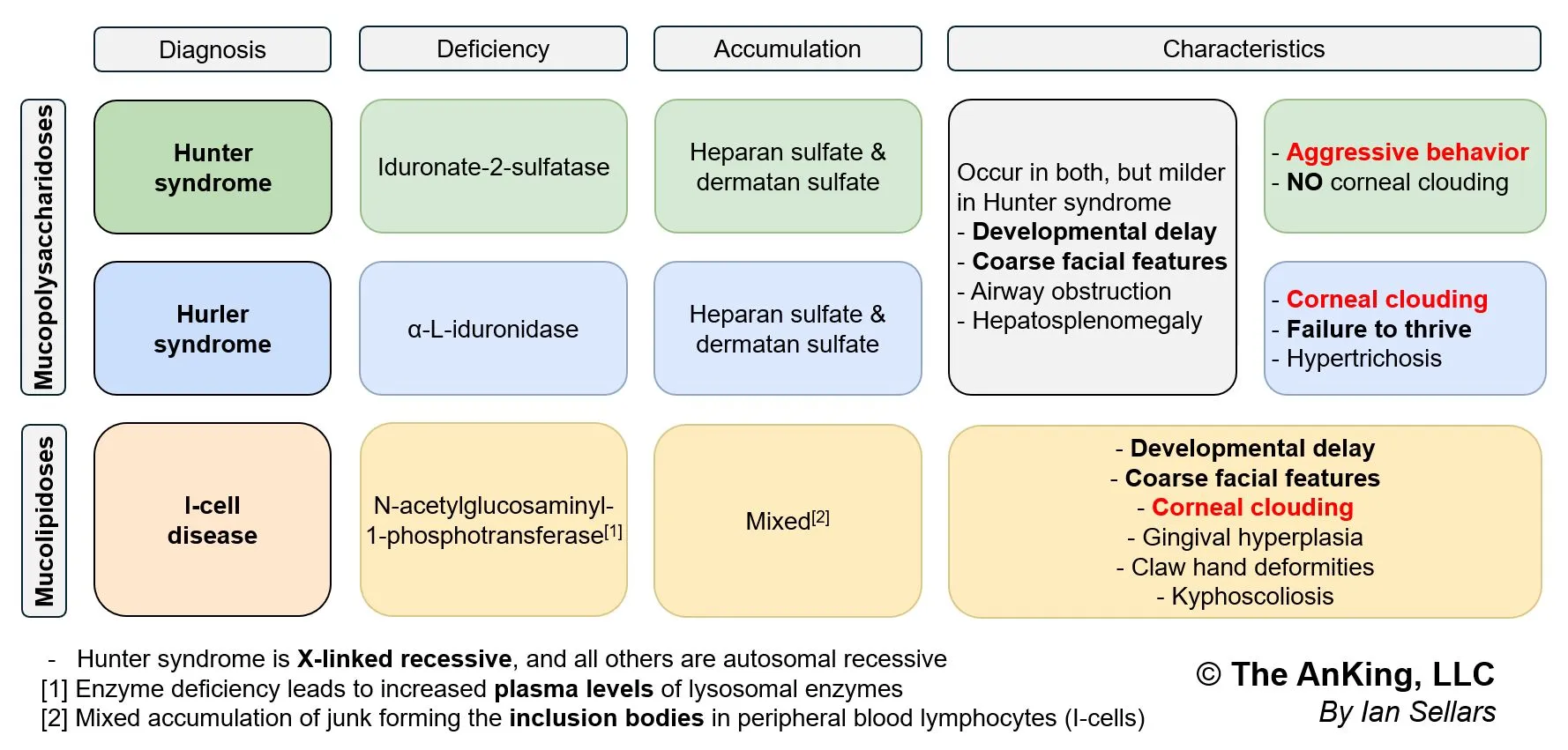
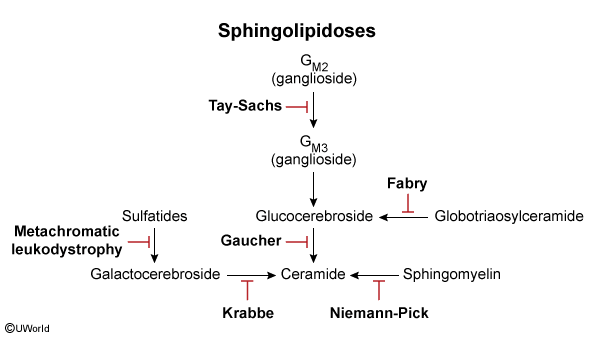
Fabry disease
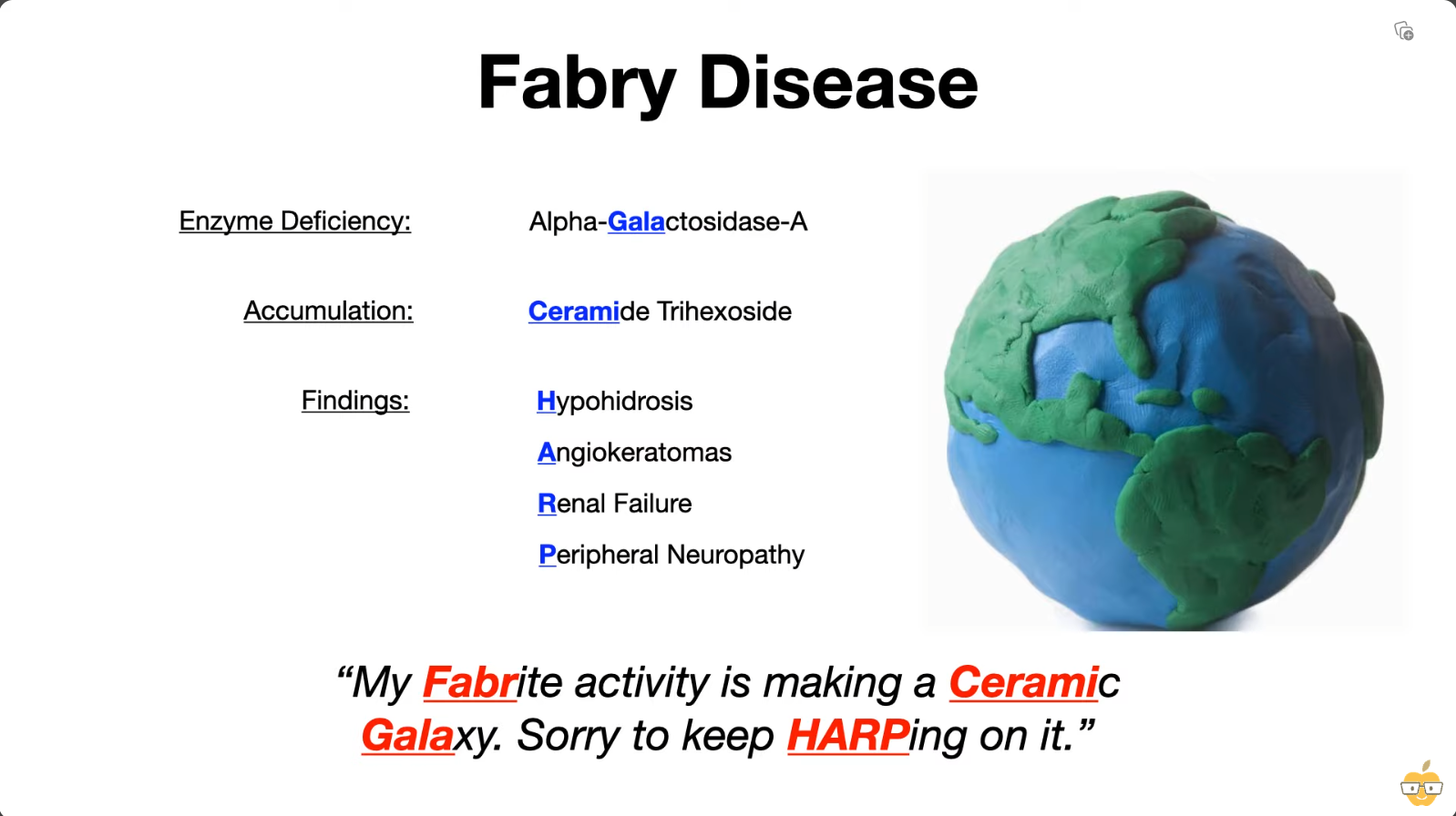 Fabrite → favourite
Fabrite → favourite
- Features (Classic Triad):
-
- Episodic peripheral neuropathy (burning pain in hands/feet).
-
- Angiokeratomas (dark red skin lesions).
-
- Hypohidrosis (decreased sweating).
-
- Late Complications: Renal failure, cardiovascular disease.
Gaucher disease
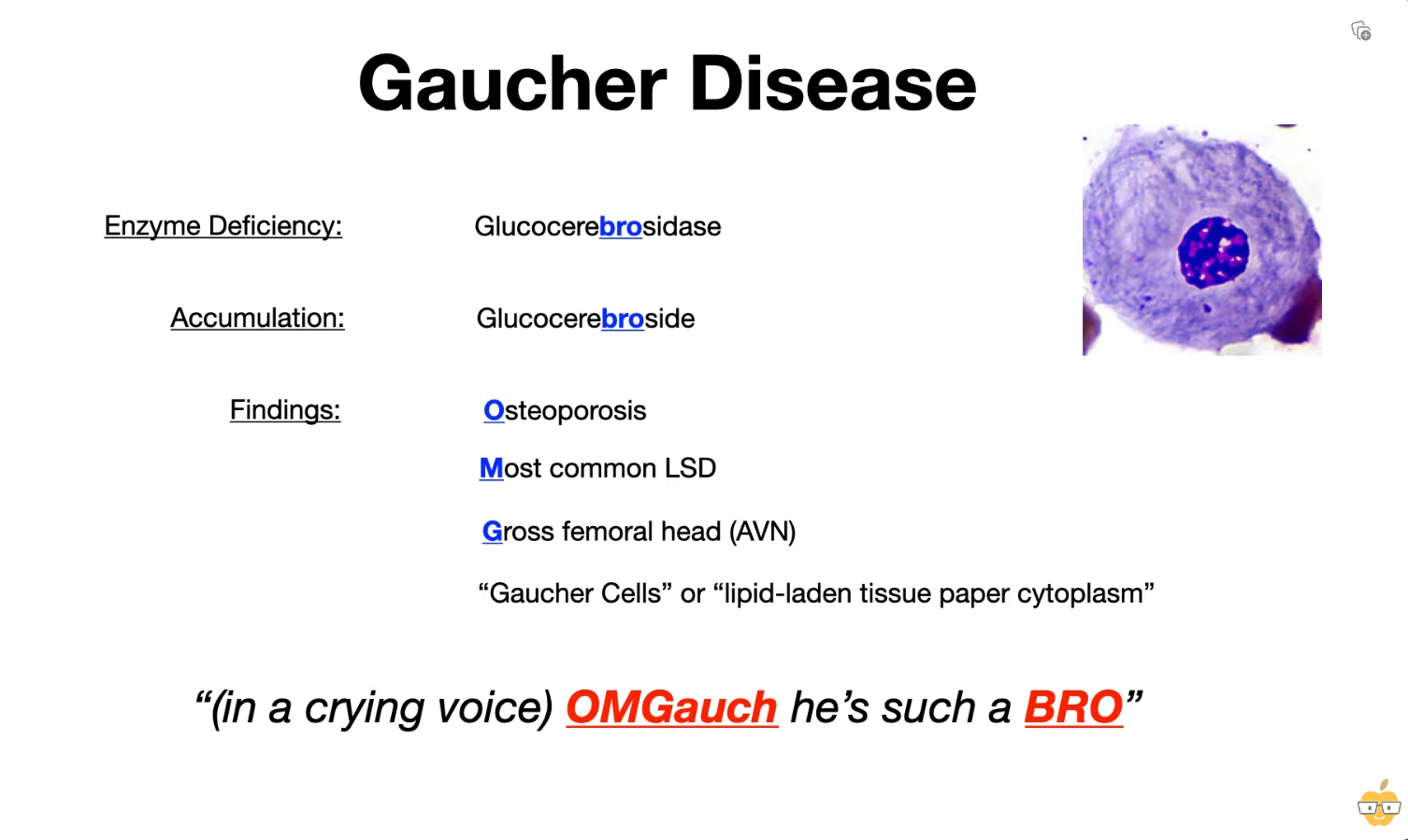 Because you are crying, you need a tissue paper to wipe tears.
Because you are crying, you need a tissue paper to wipe tears.
- Features:
- Most common LSD.
- Massive hepatosplenomegaly.
- Pancytopenia (anemia, thrombocytopenia, etc.).
- Aseptic necrosis of femur, bone crises.
- Gaucher cells: Lipid-laden macrophages resembling “crinkled tissue paper”.
Tay-Sachs disease
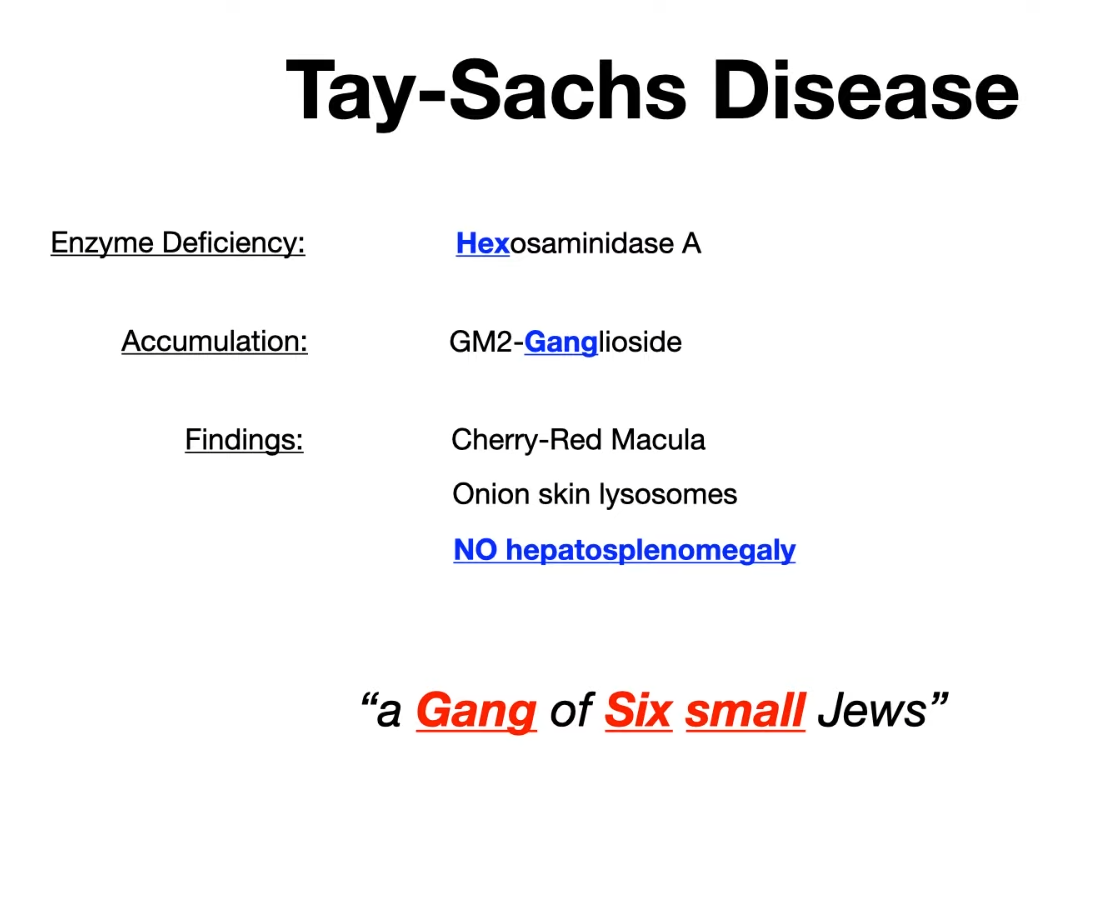 Epidemiology: more common in the Ashkenazi Jewish population
small = no hepatosplenomegaly
Epidemiology: more common in the Ashkenazi Jewish population
small = no hepatosplenomegaly
Mnemonic
- Any diseases with a hyphen in the name will presents with Cherry-Red Macula.
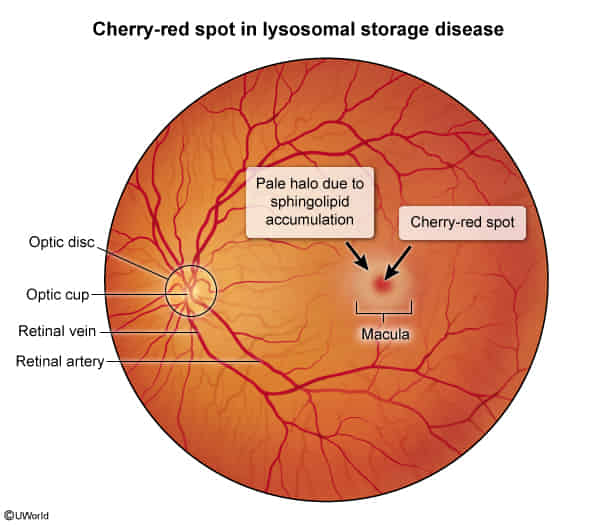
- Retinal Ganglion Cell Accumulation: In these diseases, the defective lysosomal enzymes lead to an accumulation of undigested substrates (like lipids) within the cells, including the ganglion cells of the retina.
- Macular Opacity: The ganglion cell layer is particularly thick in the macula, the central part of the retina responsible for sharp, detailed vision. The buildup of these materials in the ganglion cells around the fovea makes this area appear pale or opaque.
- Foveal Contrast: The fovea centralis, the very center of the macula, is extremely thin and lacks ganglion cells. It derives its blood supply from the choroid, not the retinal circulation. Therefore, it’s not affected by the storage material accumulation in the same way.
- Cherry-Red Appearance: Because the surrounding area becomes pale due to the accumulated substances, the unaffected fovea maintains its normal reddish appearance (due to the underlying choroidal blood supply), creating a contrasting “cherry-red spot” in the center.
Niemann-Pick disease
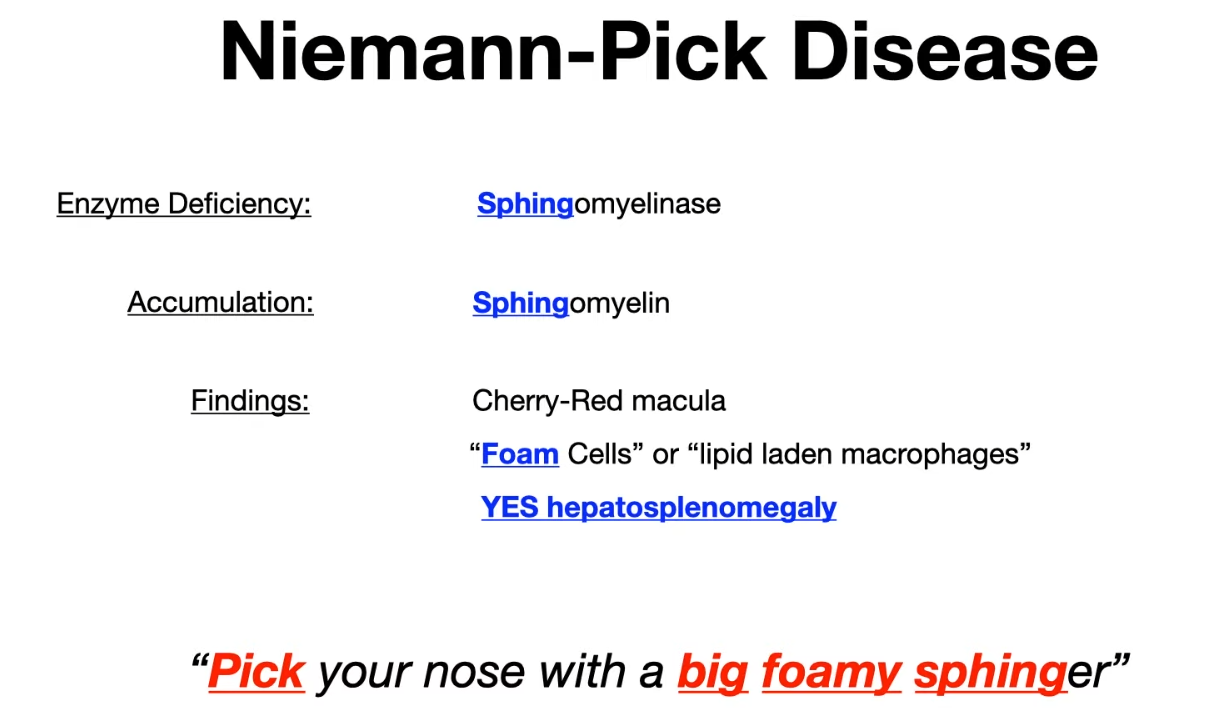
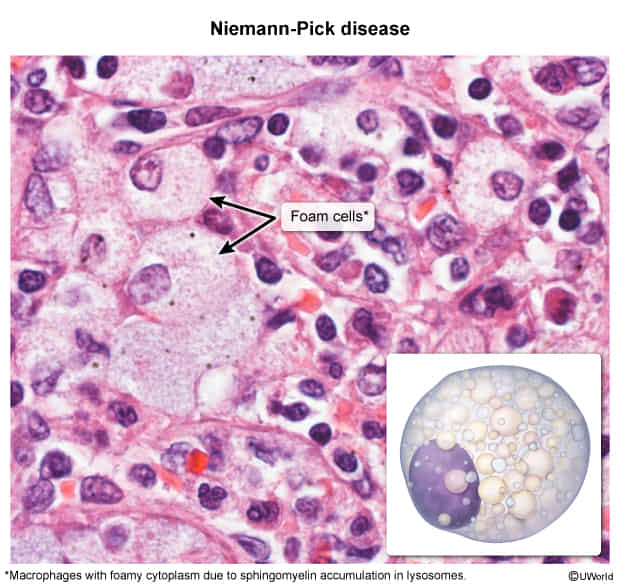 Sphinger → finger
big = hepatosplenomegaly
Sphinger → finger
big = hepatosplenomegaly
Krabbe disease
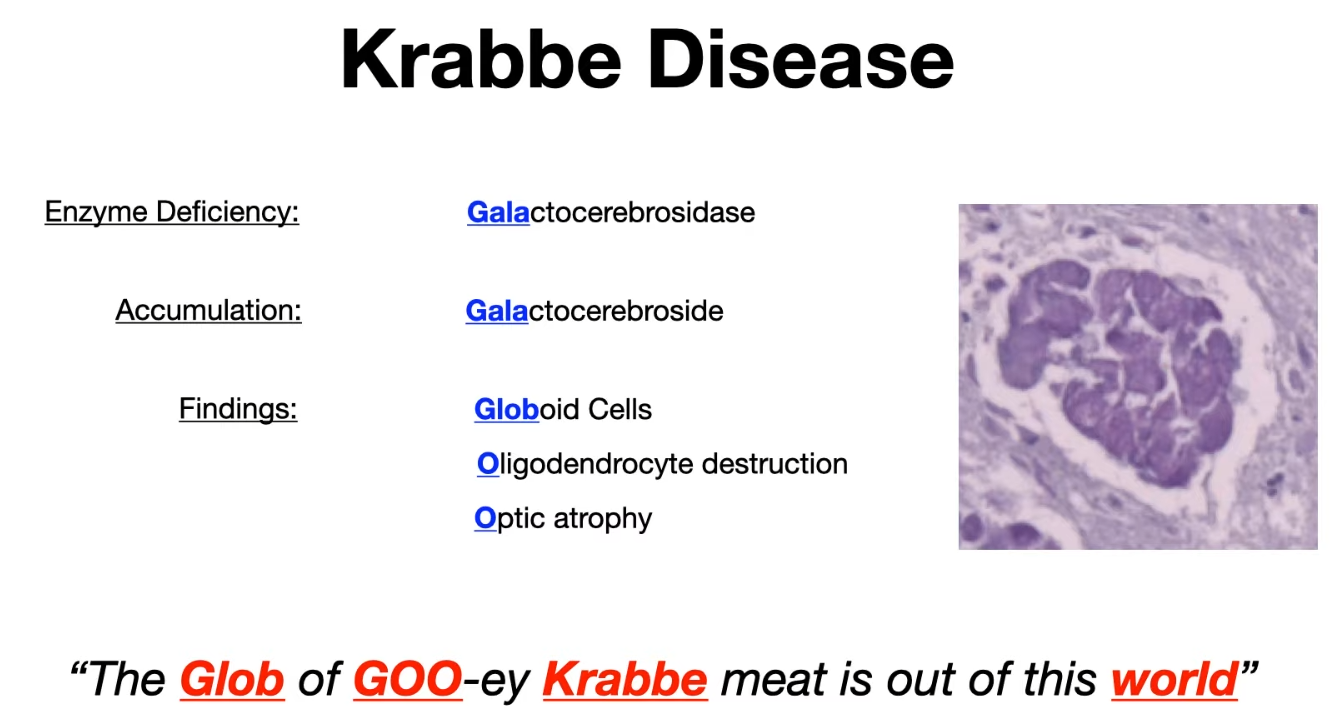 World → Galaxy → Gala
World → Galaxy → Gala
Hunter syndrome & Hurler syndrome
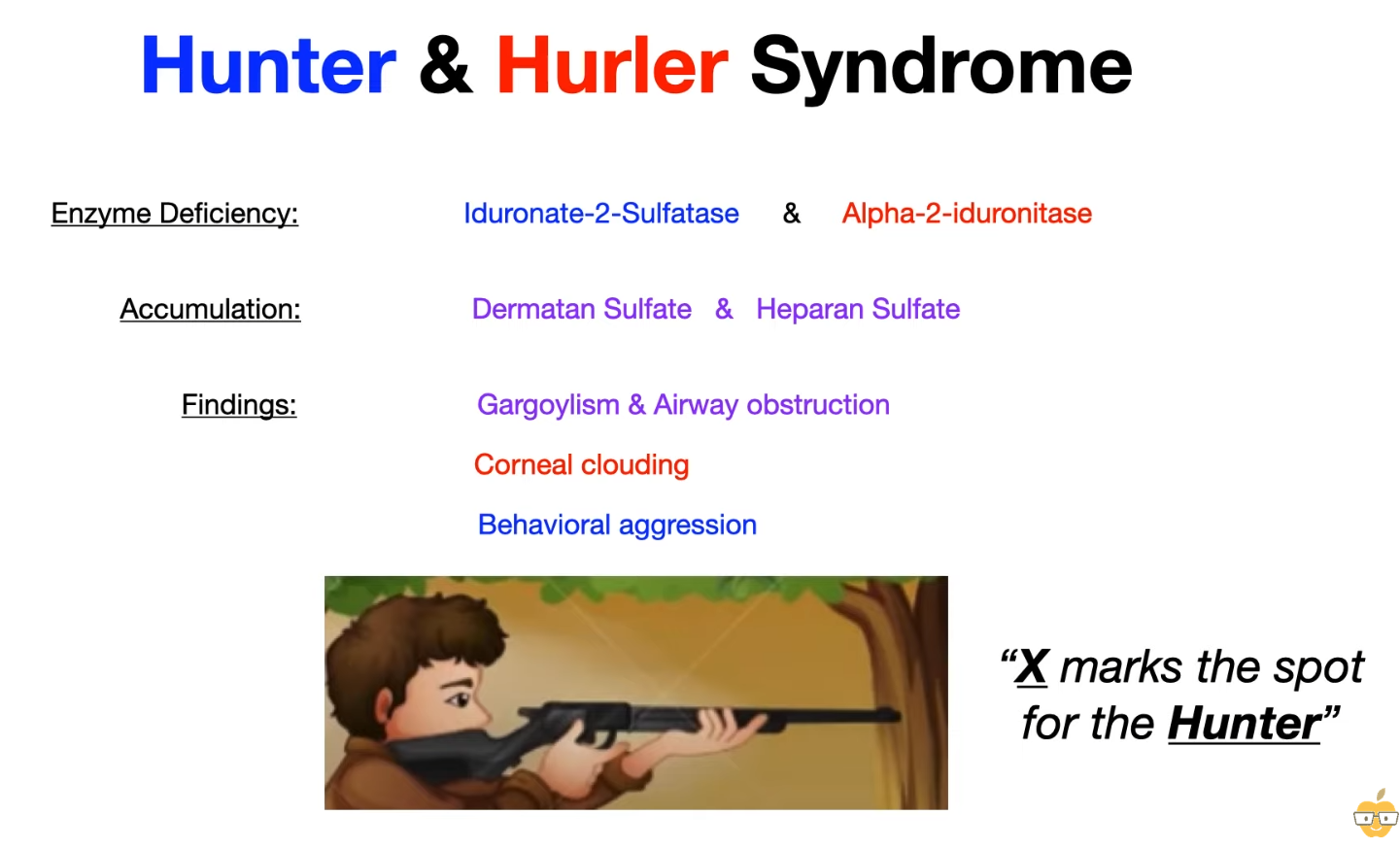
Mnemonic
- X → X link recessive
- The gun touches the hunter’s derm → Heparan sulfate, dermatan sulfate.
- Hunter doesn’t have corneal cloudy → or he couldn’t see targets
- Hunters are aggressive
- Hurler syndrome
- Severe developmental delay & intellectual disability
- Coarse facial features (eg, frontal bossing, broad nose, flat midface)
- Corneal clouding
- Hepatosplenomegaly
- Death at age <10 (cardiac complications)
- Hunter syndrome
- Milder features than Hurler:
- (+) Aggressive behavior
- (−) Corneal clouding
- Death in adolescence/early adulthood
- Milder features than Hurler:
Metachromatic leukodystrophy
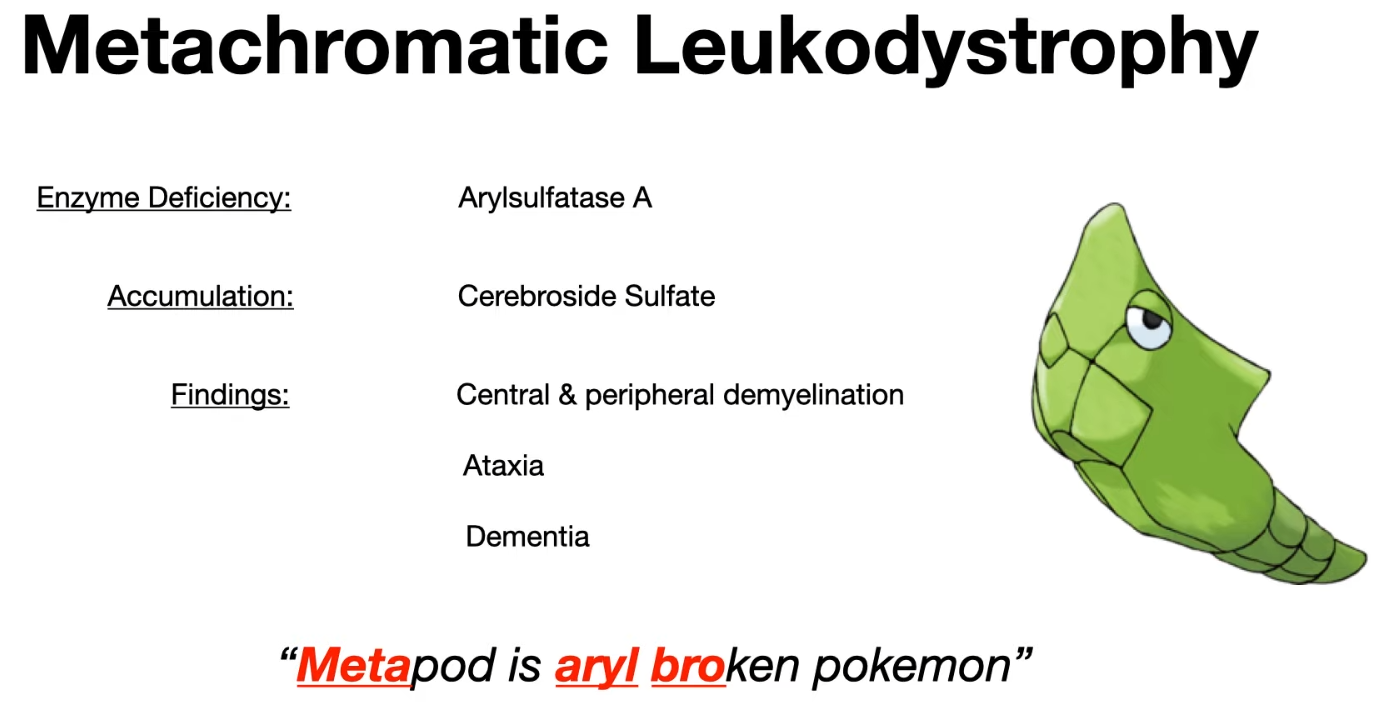
- Metapod can’t walk, can’t say, can demyelinate to butterfly
Tip
Pompe disease also affects lysosome.
I-cell disease
- Definition: an autosomal recessive disease caused by a defect in N-acetylglucosaminyl-1-phosphotransferase activity
- Pathophysiology
- Defective N-acetylglucosaminyl-1-phosphotransferase → impaired phosphorylation of mannose residues of glycoproteins in the Golgi apparatus that should be transported to lysosomes (glycoproteins do not have mannose-6-phosphate) → extracellular secretion of these glycoproteins instead of delivery to lysosomes → inability to degrade lysosomal content → accumulation of abnormal lysosomal substances in the serum
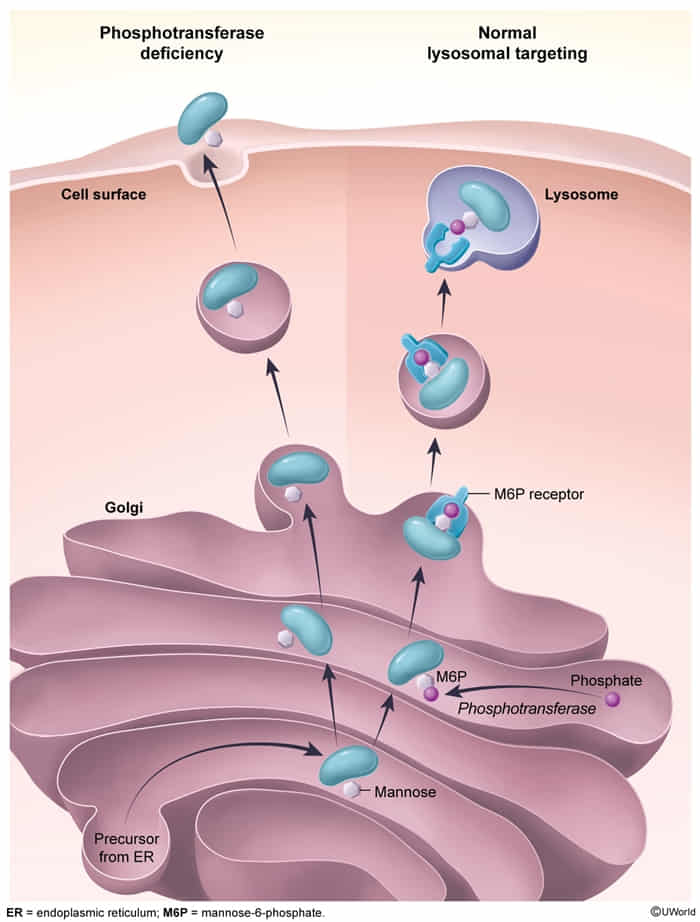
- Defective N-acetylglucosaminyl-1-phosphotransferase → impaired phosphorylation of mannose residues of glycoproteins in the Golgi apparatus that should be transported to lysosomes (glycoproteins do not have mannose-6-phosphate) → extracellular secretion of these glycoproteins instead of delivery to lysosomes → inability to degrade lysosomal content → accumulation of abnormal lysosomal substances in the serum
- Clinical features
- Coarse facial features
- Corneal clouding: progresses to blindness
- Gingival hyperplasia
- Claw hand deformity
- Kyphoscoliosis
- Abnormal bone growth and restricted joint movements
- Failure to thrive (growth failure by 2 years of age)
- Developmental delay
- Diagnostics
- Prenatal: low levels of N-acetylglucosamine-1-phosphodiesterase enzyme activity in amniotic fluid or chorionic villi
- Postnatal
- Increased plasma levels of lysosomal enzymes
- Inclusion bodies in peripheral blood lymphocytes (I-cells)
- Note: negative urinary glycosaminoglycans (compared with mucopolysaccharidoses)